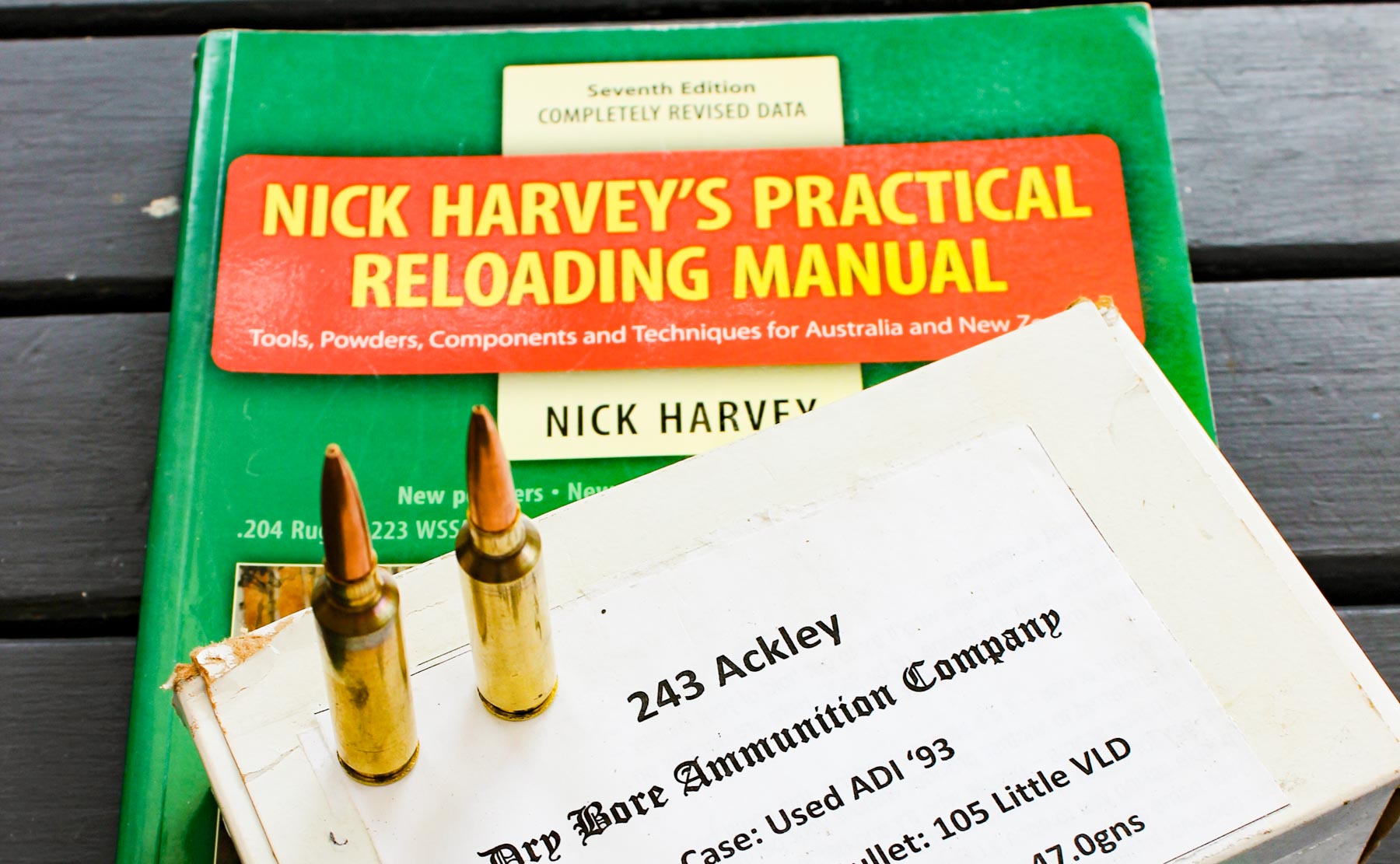How many reloading manuals do you need? It’s a fair question that requires a logical answer.
My reply is three: Australian Nick Harvey’s Practical Reloading Manual, ADI’s No 10 Handloaders Guide, and one of the American manuals — take your pick!

You may also be guided by the manual having data for your particular cartridge.
In my opinion, these three publications have all the information required to produce reliable, safe ammunition. They are also typical of the types of manuals available.
ADI, being a powder manufacturer, has practically no technical detail and concentrates on powder loads for many cartridges. Other powder companies produce much the same product.
ADI powders are the ones you are most likely to obtain in this time of component shortage in Australia.
Nick Harvey’s manual is about half filled with good, solid technical detail and the rest is cartridge load data.
The manuals put out by the component manufacturers are usually short on technical detail but have some, plus of course the cartridge data, mainly applying to their projectiles.
The new reloader must understand each step of the reloading process and apply it as described. There is no room for shortcuts!
Primers and powder need to be treated with respect when you consider what they are capable of. Handled properly, they are not of concern.

While there are many rules for reloaders, I always put three at the forefront:
- Do not under any circumstances exceed the maximum manual loads.
- Only have a single can of powder on the bench at any one time.
- Don’t reload with haste — it’s not a race.
What powder should you use? Powders are listed from the fastest to the slowest in the burning rate. If you select a midrange powder there is room to move, if necessary, in either direction should the initial powder prove unacceptable and you have to change to another.
Another issue is that many reloaders become velocity happy and attempt to wring every last foot per second of speed out of any given cartridge. It’s not very wise in the long run.

Don’t be seduced by some fool on the internet who claims that while any number of manuals have a maximum load of 40 grains of xyz powder with a 55gn projectile in the .224 Whizbang cartridge, his rifle digests 43gn of the same powder using the same projectile without any visible pressure signs and is 200fps faster!
What our hero fails to mention is that such figures are only possible simply because the bore of his rifle no longer exists and is simply worn out, and the result is likely to be larger than normal groups and decreased case life.
Reloading manuals per se are the result of many different authorities testing all components with sophisticated pressure equipment not available to the home reloader.
Therefore, the results should be treated with respect.
It is often claimed that such results are, in the main, conservative. This may well be correct but I suggest it’s better to be conservative than be on the cutting edge and possibly subject to unknown pressure excursions every time you pull a trigger.
Manuals are an indispensable part of the safety measures pertaining to reloading that ensure boundaries are not crossed and that the process remains safe for everyone involved.
Obey the reloading rules and you will not get into trouble.

0 Comments